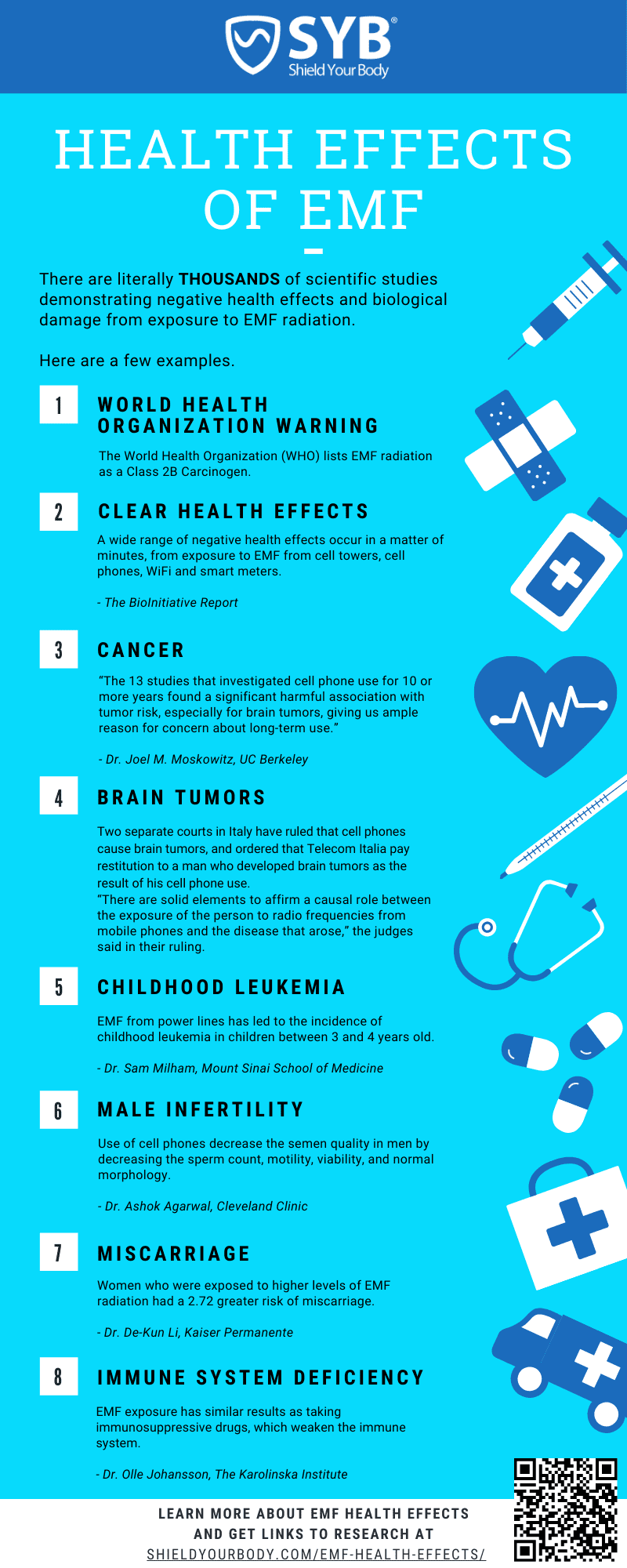It’s becoming increasingly clear that the problems of tech addiction and EMF exposure are inextricably linked. Without EMF, our devices wouldn’t function. And the more deeply those devices become integrated into our lives, the more our EMF exposure rises.
That’s why it’s important for me to discuss technology addiction.
In fact, it’s not just technology addiction that’s the problem – it’s addictive technology. Let’s make that distinction from the outset.
The issue isn’t just that more and more people are becoming addicted to technology, but that technology is becoming more and more addictive. You don’t have to have a clinically diagnosed addiction to fall prey, to some degree or another, to the addictive properties that are deliberately built into devices, apps, video games and social networks.
It’s for that reason that this topic affects all of us. Period.
So let’s take a look.

Want to Slash Your EMF Health Risks?
Good! Learn the one small change you should make right now.
What’s The Problem?
Sure, technology has clear and significant benefits. No one is going to deny the value of video calls with your grandparents, or the convenience of Uber Eats when you’re too tired to cook on a Friday night.
But, like anything, there needs to be balance for it to be healthy. And we’re increasingly being drawn to using technology in overly dependent or unhealthy ways.
Consider that teens now spend 7.5 hours per day looking at screens – and that’s excluding for school and homework.
Or get this: a typical smartphone user taps, touches, or swipes their device a staggering 2,617 times per day.
Our devices are the first thing we look at when we wake up, and the last thing we see before we sleep. And this simply cannot be without repercussions.

Technology Addiction Is on the Rise
Technology addiction can be defined as any obsessive tech-related behavior. Internet addiction, Internet Gaming Disorder, and smartphone addiction (which I’ve written about in this post) are all related terms you may hear about. Technology addiction can be seen as a broader term that encompasses all of these things – and more.
To date, technology dependencies like internet addiction have not been formally recognized by the World Health Organization – only gaming disorder has been classified as a clinical condition.
Until the definitions of such disorders are standardized, it’s difficult to accurately report on how many people are suffering from them.
None the less, tech addictions are definitely on the rise – that much is undeniable.
Some reports suggest that up to 38% of the general population are affected by problematic technology use.
And here’s the thing: Even for those of us who don’t suffer from obsessive tech-related behaviors, using devices still has a range of negative consequences. And we’re still being insidiously manipulated into using them more than we might like. (More on all that below.)
For now, let’s look at the negative effects of technology overuse.
Devices Cause a Range of Physical Health Problems
Being glued to our devices is, quite simply, bad for our physical health. Some of the problems caused by tech use include:
- Eye strain and vision problems
- RSI (Repetitive Strain Injury) of fingers, thumbs and wrists
- Carpal tunnel syndrome
- Muscular-skeletal problems such as “text neck”
- Headaches
- Back pain
Reduced physical activity from tech overuse can also lead to problems like obesity, cardiovascular disease and type 2 diabetes.
Too Much Tech Damages Our Relationships
Meaningful relationships are key to health, happiness, and longevity. A landmark Harvard study that tracked participants for almost 80 years found that “close relationships, more than money or fame, are what keep people happy throughout their lives”.
Though technology allows us to communicate instantaneously to anyone in the world, using it to foster meaningful relationships is far more complicated.
Consider that tech use reduces the amount of time we spend in face-to-face interactions.
Or that it leads us to ignore one another or become distracted when those interactions do occur.
In one survey, 89% of participants said that insensitive use of technology had negatively affected their personal relationships. In a 2018 survey of 75,000 married couples, 79% admitted that technology distracts them from connecting with each other.
Another set of studies even found that simply having devices present (say, sitting out on the table) in a social situation interferes with your sense of connection and the quality of the conversation.
As these researchers put it: “It is ironic that cell phones, originally designed as a communication tool, may actually hinder rather than foster interpersonal connectedness.”

Screen Time Causes Neurological Damage
Spending too much time on devices can physically and lastingly affect the brain – especially in young children and teens, whose brains are still developing.
Says Dr. Nicholas Kardaras, P.h.D, author of the book Glow Kids: ”Recent brain imaging studies conclusively show that excessive screen exposure can neurologically damage a young person’s developing brain in the same way that drug addiction can.”
I won’t go into all the research on this here – suffice to say, that’s extremely worrying. If you’d like to dig into it further, Dr. Kardaras’ website has a good summary of the research on effects of screens on brain health.
Social Media Use Leads to Depression and Other Mental Health Issues
The objective of social networking is to connect people. And yet, social media has the strange habit of driving us apart.
Take this 2017 study, which found that young people with higher social media use were more than three times as likely to feel socially isolated than those who used it less.
Or another 2017 study linking social media use with anxiety. Or this one that found Facebook envy was a predictor of depression in college students.
To solidify the link, one 2018 study used an inverse methodology and found that limiting social media use led to significant reductions in loneliness and depression.
The research on social media use is not unequivocal – some interactions can be positive. But the potential for disruption to mental health is very real and very great.
Digital Devices Are the Enemy of Sleep
Electronic devices emit blue light. When we’re exposed to this light, our bodies fail to produce the right amount of melatonin – a hormone responsible for making us sleepy.
What does this mean? Essentially, blue light from devices interferes with our circadian rhythms and disrupts our sleep.
Research shows that exposure to blue light can decrease the amount of time we spend in slow-wave and REM sleep, impacting memory and mood. So if you wake up extra tired and grumpy after a bout of listless late-night scrolling, you know why.
This is why it’s so important to stay off your devices in the hour or so before going to bed. And yet, these days, few people do that. In fact, an alarming number of people sleep with their phones right there with them.
It’s not just blue light that’s harmful. By having devices switched on, we’re exposed to EMF radiation"Radiation" in the context of Electromagnetic Fields (EMF) refers to the process by which energy is emitted and transmitted through space or a material medium in the form of electromagnetic... More all night long. That’s why we say you should turn off your WiFi router at night.
If you want to read more about creating a healthy sleep environment, check out this post.
Cell Phones Are Linked to Memory Damage
Our brains may be incredibly complex and intelligent systems, but they’re also highly vulnerable. One of the threats to their functioning? Radiofrequency radiation from cell phones.
A 2017 study found that as little as five minutes on a mobile phone can cause “significant memory impairment” in humans.
A 2018 study of nearly 700 Swiss teens found that cell phone use has an adverse effect on memory and cognitive function.
Digital Media Consumption Is Associated With ADHD
Modern technology – and the media that we view on it – is hyper-stimulating. We’ve all noticed our attention spans shrinking as a result. It’s also believed to be the reason for growing reports of ADHD symptoms in children.
One longitudinal study of over 3,000 teens found the following:
“There was a significant association between higher frequency"Frequency" in the context of electricity, Electromagnetic Fields (EMF), and wireless communication, can be thought of as the number of times something happens in a second. Specifically, it refers to... More of modern digital media use and subsequent symptoms of ADHD over a 24-month follow-up.”
Suffers of ADHD have trouble sitting still, staying organized, completing tasks, and paying attention.
Tech Use Is Exposing Us to Unprecedented Levels of Harmful EMF Radiation
As I mentioned in the introduction, it’s impossible to separate tech use from exposure to EMF (electromagnetic fields).
If our devices are on, they’re emitting some level of radiation. At one level you have extremely low frequencyDefinition and Characteristics Extremely Low Frequency (ELF) refers to the lower end of the electromagnetic (EM) spectrum with frequencies from 3 Hz to 300 Hz. This range lies below the... More (ELF) fields emitted by all electrical devices; on another, there’s the radiofrequency radiation from WiFi, BluetoothFrom the perspective of someone concerned about the health effects of electromagnetic radiation, understanding Bluetooth radiation is crucial, especially in our increasingly wireless world. Bluetooth technology, ubiquitous in our daily... More, cell networks, and so on.
I have a post explaining EMF in simple terms if you want to learn more about what it is. Suffice to say, our devices emanate this type of radiation. And because the number of devices in our lives is growing rapidly, so too is our exposure to it.
The health effects of EMF exposure are numerous, and they’ve been demonstrated by literally thousands of peer-reviewed scientific studies.
These health issues include:
- Brain Tumours
- Fertility issues
- Miscarriage
- DNA damage
- Immune System impairment

The more time we spend connected to technology, the more this exposure accumulates and does us harm. That’s part of the reason why addictive technology is a growing problem.
“Internet is a Factory,” says Business Insider
In June 2021, Business Insider wrote an article called “The internet is destroying our brains, but we can’t quit. It’s a factory we’re forced to work in without any pay.” And it raises an interesting point about internet addiction and its effects on the general population.
Ever since the European Organization for Nuclear Research, or CERN, made the world wide web public in 1993, we’ve formulated our society around the internet. Today, even a slight outage in cloud computing platforms like Amazon Web Services would result in a complete disaster.
We rely on the internet for shopping, finding jobs, running businesses, and most of our communications. And we’ve certainly reached the point where it will be extremely hard for people to socialize without the internet.
On top of that, the pandemic also showed us the true level of involvement the internet has in our lives. Most of us have only been able to fulfill our duties through the internet. And who would’ve thought that our entire educational infrastructure could function on video conferencing platforms like Zoom and Meet?
So, it’s certainly an undeniable fact that the internet has become an integral part of our lives. But is that a good thing? Does more technology equal progress?
Internet: A Brilliant Opportunity or A Consensual Unpaid Labor?
There are two sides to this coin. And, like it or not, the internet has played a significant role in bringing us up to the level we are today. Most of us work online, shop online, find information online, look for solutions online… So, the internet’s been a great helping hand.
And, it’s not going anywhere unless there’s a new major breakthrough that changes everything like the internet did.
Right now, we need to be online. There’s no choice. But, are we using the internet only for the convenience it provides? Or to do our work and move forward in life?
NO.
Besides working and using the internet for convenience, we’re also scrolling on social media sites for hours, binging on YouTube videos, and constantly creating content for likes and follows. So, what’s causing this? Not everyone wants to be a social media influencer or internet celebrity.
You Create, They Profit: An Unrecognized Reality
Do you know who profits off the time, energy"Energy" is a fundamental concept in physics, often described as the ability to do work or cause change. In everyday terms, it's what is needed to move things, heat them... More, and creativity that you put in on the internet every single day? The multi-billion-dollar companies responsible for these platforms.
Business Insider puts it this way: “We produce the memes, tweets, posts, and pictures that keep us tethered to the internet, and then that content is monetized in the form of advertisements – revenue users help produce, but do not usually see a penny of.”
Culture and Media Theorist McKenzie Wark, in her book published in 2019, wrote, “the internet uses our labor without us really knowing it. Unlike the broadcast era of media, during which the owners of television networks and movie studios had to at least create the content to sell to us, we now create all the content for each other, mostly without being paid.”
Social media companies like Facebook, Twitter, and Instagram don’t even have to bother about creating content to keep users on their site. “We have to entertain each other while they collect the rent,” says Wark.
So why exactly do we do this?
Fame? Well, what about sites like Reddit where almost no one will recognize you even if you gather millions of “karmas” (Reddit internet points that you earn by posting, commenting, and giving and receiving awards).
Let me tell you exactly why a massive amount of the population spends hours on the internet, creates a ton of content for free, and doesn’t ever worry about who’s profiting off their labor.
The answer is that the modern internet and the gadgets we use to access it are addictive. Here’s why.
Why Is Technology So Addictive?
In essence, the answer to this question is simple: Technology is addictive because it’s designed to be.
“There are only two industries that call their customers ‘users’: illegal drugs and software.”
— Yale Computer Scientist Edward Tufte in ‘The Social Dilemma’
There’s a whole sub-category of design called behavioral design. The job of a behavioral designer is fairly straightforward: work out how to design products that shape people’s decisions and behaviors. How can they, the designers of the product, influence you into doing what they want you to do?
That’s not to say the job is easy. Behavioral designers must understand human psychology – how our minds work, what motivates us, and how cues in our environment can be used to radically change our behavior.
This type of influence is strongest when we, the subjects, don’t realize it’s happening. That’s why the strategies tech designers use are so subtle yet effective at manipulating our actions and influencing our habits.
If you think about it, every app we use is competing for our attention. The ones that can influence us enough to cause a lasting change in our behavior – let’s say the behavior is opening up the app on a daily basis – are the ones that thrive in the market. So it’s in the interest of every app, every device, every piece of technology, to manipulate us.
It’s in every company’s interest to make their tech addictive.
Here’s a great quote from Tristan Harris, former design ethicist at Google:
“If something is a tool, it genuinely is just sitting there, waiting patiently. If something is not a tool it’s demanding things from you. It’s seducing you, it’s manipulating you, it wants things from you. We’ve moved away from a tools-based technology environment, to an addiction and manipulation based technology environment. Social media isn’t a tool waiting to be used. It has its own goals, and it has its own means of pursuing them by using your psychology against you.”
But Can’t Behavioral Design Be Used For Good?
Sure it can. Maybe you want to design an app that nudges people to take their medication every day. Or keeps them motivated to exercise, or eat healthy, or even to use their devices less (yes – there are apps for that too).
The principles are the same; however, some companies use behavioral psychology to benefit you, and some use it to benefit themselves. And sometimes the line between influence and manipulation is very, very tenuous.
There’s little debate that the ethics of major social networks like Facebook, YouTube and Instagram are questionable at best. For them, our attention is the product. And that means they will do whatever they can to manipulate us into giving it to them.
It’s also impossible to separate these apps from the devices they’re accessed on. In today’s tech-driven world, both our apps and devices have addictive qualities that keep us coming back. And both apps and devices harm us in different ways, compounding the problems to our health and happiness.
How We Get Hooked: Dopamine
You’ve probably heard of dopamine – often referred to as the “pleasure chemical”. Dopamine is associated with gambling, sex, illicit drugs, and that indulgent slice of triple chocolate Oreo cake.
But let’s clear something up here: Dopamine isn’t actually responsible for making us feel pleasure. So the “pleasure chemical” moniker is a little misleading.
Instead, dopamine comes into play when we anticipate pleasure. It’s what causes us to seek out pleasurable experiences – not what makes those experiences enjoyable.
What does this have to do with technology?
Well, when we know something will be pleasurable, our brain is triggered to release dopamine, thus encouraging us to repeat that same action again (and again – which is why dopamine is often linked to addiction). The dopamine release is like a motivator, pushing us to seek out a reward.
Our gadgets and the apps that run on them are designed to be the trigger for that dopamine release.
Think of when a phone pings with a notification: your brain releases dopamine, anticipating a ‘like’ on the photo you just posted or a message from a friend. And you’re prompted to pick up your phone and read the notification.
Now, the clever thing about the way our tech is designed is that the rewards you get are variable; that is, they keep you guessing.
The Power of Variable Rewards
So here’s the really interesting part. Things are actually more addictive if they don’t give out the same reward consistently.
This goes back to the research of B.F. Skinner in the 1950s. Skinner taught rats to press a lever that would release a food pellet (the reward). He found that the rats pushed the lever more often and more compulsively if they didn’t get the reward every time.
So, when the results of a behavior are somewhat unpredictable, we’re compelled to keep doing the action until we get the outcome we want. If this sounds like gambling at a slot machine in Vegas, you’re spot on – that’s exactly how those things work.
Gambling is addictive because the rewards are variable. Sometimes you win, sometimes you lose.

And much of our technology is the same. Here are a few examples:
Video games
Imagine if games were designed so you’d win every time. We’d quickly lose interest. Enter variable rewards and the rise of gaming addictions. Many of the strategies used in game design have carried over to the design of devices and apps (aka, “gamification”).
Is there something new and exciting in your inbox? Or not? You won’t know unless you check it (yet again) and see if you get your variable reward.
Social Media Feeds
Your Facebook (Instagram/Twitter/TikTok/whatever) feed is one big mishmash of variable rewards. If you’ve ever found yourself scrolling and scrolling but never feeling satisfied, this is why: it’s like you’re always looking for that next ‘hit’ of something good. But when you get it, you just consume it and then move on to searching for the next one.
Infinite scroll
Speaking of scrolling… and scrolling… and scrolling… There may be nothing in the tech world more slot machine-like than infinite scroll.
You get to the end of a page, it pauses for that one delicious second while you wait with anticipation to see what will appear… dopamine flows… you’re met with absolutely nothing interesting, and yet you can’t help but do it again.
Aza Raskin, the inventor of infinite scroll, says that it wastes about 200,000 human lifetimes per day. “One of my lessons from infinite scroll: that optimizing something for ease-of-use does not mean best for the user or humanity,” he says.
Likes and engagements
When we share something online, we don’t know how it will be received. Will it get lots of likes and comments? Will people share it? We don’t know – and that’s what makes the process so thrilling. What’s more, the reinforcements we get are deeply attractive psychologically – acceptance, approval and attention are all possible rewards.
And more…
Those are just to name a few. If you look, you’ll find that variable rewards are embedded everywhere in technology. It’s how behavioral designers use our psychology against us to ensure we keep using their products.
Pull the lever, see if you win. Do it enough times, and you’ll start to get addicted.
2021: Facebook Won’t Let You Quit Your Addiction
With over 2.85 billion monthly active users, Facebook is one of the largest social media platforms today. Statistics also say that more than 864 million of those users check Facebook every single day.
And since that many people are visiting this platform, I think it’s safe to assume that they must be doing something right to attract such a huge crowd.
But what exactly drives that many people to Facebook every day?
Nir Eyal, a famous American author who wrote the book Hooked: How to Build Habit-Forming Products explains it this way:
“The most successful tech products have one thing in common: They’re addictive. And users don’t get hooked by accident.”
In his book, he mentions four tactics that companies like Facebook and Twitter use to make you keep coming back on their platform. He calls these tactics “The Hook.”
The Hook
The Hook consists of four strategies, namely: Trigger, Action, Reward, and Investment.
Trigger: The trigger is what compels you to check Facebook, even if you aren’t thinking about it at the moment. It can be in the form of a notification, an online advertisement, or an email describing what you’re missing out on.
Action: There are billions of web pages on the internet, and a massive chunk of them contain a social media share button—predominantly for Facebook and Twitter. Besides that, these social sites also provide an embed code for newsletters and emails, so it’s easier for you to share the content on their platform.
Reward: Reward, in this case, is the amount of recognition that you receive. It may be in the form of likes, follows, shares, or others. Also, entertainment is a huge reward. If we look at Facebook, it has a robust algorithm recommending videos, pictures, and pages based on your activity. So, that’s another reward for surfing Facebook.
Investment: According to psychologists, emotions that affect investing include fear and greed, but are more diverse and can significantly impact results. Once you invest in something, even if that investment is just one hour of your time, you’ll subconsciously feel the need to care about what you’ve invested in. And that works best with Facebook’s personalized algorithm.
Can You Escape?
The hook tactic depends entirely on how deeply you’re addicted to using Facebook. If something were to prevent you from compulsively checking your account, the Hook would fail. This translates to less revenue for these companies, and when you’re running a business on a global scale, that’s certainly not acceptable.
Facebook demonstrated this in October 2020 when they banned Louis Barclay for life from Facebook because of his software called “Unfollow Everything.”
Unfollow Everything: How It Works (Or Was Supposed to Work)
Unfollow Everything is a Chrome browser extension that allows users to clean up their news feed by unfollowing literally everything on their accounts–pages, groups, friends, etc.
To be clear, this is not the same as unfriending. You’re still friends with people on Facebook. You can view their profile and send messages. It’s just that the updates from your Facebook friends, groups and pages won’t populate your feed unless you manually follow them.
Not having a sea of unnecessary recommendations will automatically help you reduce your Facebook addiction and save you a tremendous amount of time.
In short, what this browser extension does is that it passes the control over to you. But obviously, Facebook doesn’t want this. In July 2021, Louis Barclay, the creator of this extension, received a cease-and-desist letter from Facebook’s lawyers. He posted a redacted version of that letter online.
The letter mentions that Barclay is banned from using Facebook, Instagram, and any other Facebook-related services for life. And as expected, Barclay had to shut down his browser extension to comply with Facebook’s demands.“Facebook’s behavior isn’t just anti-competitive; it’s anti-consumer. We are being locked into platforms by virtue of their undeniable usefulness and then prevented from making legitimate choices over how we use them—not just through the squashing of tools like Unfollow Everything, but through the highly manipulative designs and features platforms adopt in the first place. The loser here is the user, and the cost is counted in billions of wasted hours spent on Facebook,” says Barclay in his article on Slate.
What All This Means For the Future
As we’ve seen above, becoming increasingly reliant on – and addicted to – our devices has some seriously harmful effects.
On one level, there’s the act of physically staring at a screen, which impacts our health in various ways. Some of these are obvious, like eye strain and accidents from texting and driving. Others are more insidious, like the rising levels of EMF tech addiction exposes us to on a daily basis.
On another level, there’s the mental and psychological effects of living in a digital world – a world that has its own agenda and in which we are not merely participants but products to be consumed.

It’s not just individual health and wellbeing that are at stake, either. Many people are of the belief that technological advancements are actually ripping apart our very social fabric.
Consider personalized news feeds. We see what we want to see; our beliefs are never challenged, and we become more and more polarized as a result. The internet is not objective: even your Google search results are tailored to you based on your location, search history, and more.
“Over the next decade, the majority of North Americans will experience harms of many different kinds thanks to the widespread adoption and use of digital technologies,” says David Ellis, Ph.D., in an insightful 2018 Pew Research report titled The Future of Well-being in a Tech-Saturated World.
“Silicon Valley is committed to the relentless promotion of convenience and connectedness,” says Ellis. “Its success in doing so has wreaked havoc on personal privacy, online security, social skills and the ability to focus attention, not least in college classrooms.”
The Pew report surveyed some 1,150 experts – 32 percent of whom said people’s well-being will be more harmed than helped by technology in the next decade. On a more positive note, 92% answered that there are solutions. With the right interventions, we can improve the way people are affected by their use of technology.
Addictive Tech: What Can You Do About It?
Managing your relationship with technology has multiple benefits. Less time on your devices means better real-world relationships. It means better mental and physical health. And it makes you part of the solution, meaning a better future for all.
Here are 10 things you can do to foster a healthy relationship with technology:
- Create rules and guidelines for tech use at home. For example, no phones during meals.
- For better sleep, have an hour of tech-free time before bed.
- Spring clean your social media. Unfollow any accounts that encourage unhealthy comparisons; mute or block negative content.
- Track your screen time. Both Android and iOS devices have inbuilt functions for tracking how long you spend on them. You can also put time limits on particular apps.
- Practice mindfulness. Some research actually shows that using social media during an experience diminishes your memory of it. Being present and mindful helps you live in the real world and experience the moment as it happens.
- Set aside time to disconnect. Downtime is important for mental health and helps break the addictive habit cycle.
- Dial down your notifications. Turn off any that you don’t absolutely need and you’ll be surprised how many distractions you’ll cut out of your day.
- Model healthy behavior. Help the next generation of tech users develop healthy habits by being a good role model. Be conscious of your own tech use when in front of your kids.
- Physically distance yourself from your devices as much as possible. This serves two purposes: it makes you less likely to be distracted by them, and it diminishes your exposure to EMF radiation.
- Understand the psychology behind how your devices and apps get you hooked. It won’t completely stop you from falling for their wiles, but planting the seed of consciousness is a good start.
Tech Addiction & EMF: Mitigating Exposure
So back to the interrelated problems of addictive devices and EMF exposure.
Anything you can do to manage your relationship with technology and take control of addictive behaviors will naturally lead to less EMF absorption.
After all, less time on devices equals less direct contact with harmful EMF radiation.
Still – the two problems may be intertwined but they’re not entirely the same. Electromagnetic fields present their own broader set of problems that require their own solutions.
So, in addition to the above, don’t forget to implement a variety of ways to better manage your EMF exposure. That way you can still use your devices when you need to – but in a healthier way.
Here are some things you can do to further reduce and mitigate your exposure to EMF:
- Keep your body healthy through the right nutrition. You can read about which foods and supplements are good for alleviating EMF exposure here.
- Try earthing (also known as grounding) – time in nature can help to mitigate the effects of radiation.
- Cut down your use of unnecessary “smart” gadgets (do you really need your toothbrush and refrigerator to be WiFi enabled?)
- Use wired devices wherever possible. Avoid wireless earbuds, wireless keyboards and mice, etc.
- Use EMF shieldingEMF shielding refers to the practice of reducing the electromagnetic field (EMF) exposure in a particular area by blocking or altering the electromagnetic waves with barriers made of conductive or... More products for times when you can’t distance yourself from tech. Be sure to choose the right ones so you know they’re effective.
We have a whole section dedicated to Healthy Living Tips where you can find more ways to cut down your EMF exposure and keep yourself healthy – most of them free and easy to implement. So do check that out.
Are You Addicted To Tech?
Technology addiction is a growing problem. But it’s not an easy one to classify or define.
In truth, the line between healthy and unhealthy tech use is a very fine one. It’s often difficult to recognize when our use of digital devices starts to nudge towards the problematic.
To add to the confusion, there’s no single set of criteria for assessing and diagnosing cases of tech addiction. However, there are questions you can ask yourself to help determine whether you have (or are heading toward) a tech addiction. A helpful questionnaire can be found here.
If you think you’re addicted to the internet, to gaming, to your phone or other devices, or to social media, do seek out professional help. There’s a wide range of treatment options available.
For those who aren’t addicted as such or who don’t experience compulsive behaviors, it’s still worth remembering that your technology is designed to be addictive. So always be mindful of how you use it and implement ways to make screen time happier and healthier. Your body and mind will thank you for it.
Remember: the more you use these devices and engage in these experiences, the more EMF you are exposed to, and the greater your personal risk of developing negative health effects from the exposure.







